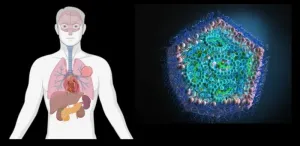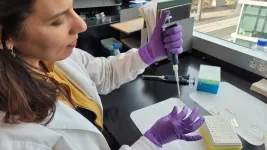(Press-News.org) There has been a shift away from the use of more reliable hormonal methods of contraception to less reliable fertility awareness methods among women requesting abortion in England and Wales over the past 5 years, reveals research published online in the journal BMJ Sexual & Reproductive Health.
Use of the Pill, mini Pill, implants, patches, and vaginal rings has given way to more ‘natural’ methods, such as period tracking apps that highlight monthly peak fertility/ovulation, the findings indicate.
While further research is needed to understand the reasons driving these changes, the trends correspond to a rise in abortion rates, with wider implications for healthcare services, conclude the researchers.
Worldwide, women seem to be increasingly reluctant to use hormonal methods of contraception, note the researchers. In 2010 around half of women of reproductive age in the UK were using the PIll, since when its use has steadily declined.
Anecdotal evidence suggests that women are increasingly turning to more ‘natural’ fertility awareness methods of contraception, largely influenced by social media, say the researchers.
But the typical failure rate for these methods ranges from 2 to 23 in every 100 women in the first year of use compared with 7 in 100 women for the Pill/implants and less than 1 in 100 for the coil (intrauterine devices), they explain.
To find out what contraceptive methods women requesting abortion in England and Wales were using when they fell pregnant, the researchers compared data from the British Pregnancy Advisory Service for the periods January to June 2018 (33,495 women) and January to June 2023 (55,055 women).
Fewer young women (aged 25 or below) requested an abortion from a BPAS facility in 2023 than in 2018. But the proportion of women who hadn’t had a previous abortion fell from 62% in 2018 to 59% in 2023.
The proportion of women of minority ethnicity rose between 2018 and 2023, as did the proportion of medical abortions requested. And the proportion of women who were at 7 or fewer weeks of pregnancy was significantly higher in 2023 than in 2018, rising from nearly 37% to just over 59%.
A sizeable shift in the methods used for contraception occurred between 2018 and 2023, the data showed.
Reported use of fertility awareness based methods around the time of conception increased from 0.4% in 2018 to 2.5% in 2023, while the age of those using these methods fell from nearly 30 to 27.
The use of hormonal methods fell from just under 19% in 2018 to just over 11% in 2023. Use of long-acting reversible contraceptive implants also fell from 3% to 0.6% over this period.
And those who said they hadn’t used any form of contraception when they fell pregnant significantly increased by 14%, rising from 56% in 2018 to nearly 70% in 2023.
This is an observational study, precluding firm conclusions to be drawn about cause and effect. And the researchers acknowledge that abortion patients may not reflect the sexually active population in general. They also highlight that the precise fertility awareness method used wasn’t recorded, so the rise in the use of app technologies can only be assumed.
“The shift in preference towards [fertility awareness methods] is coupled with reported increases in difficulty in accessing the more effective methods of contraception following the COVID-19 pandemic due to workforce changes and a reduction in primary care and sexual healthcare capabilities,” point out the researchers.
“The amalgamation of a shift in attitudes and difficulty in accessing certain methods has led to increasing use of less reliable methods, which, in turn, has the potential to increase unintended pregnancies,” they add.
They conclude: “While the rise in abortion rates is multifactorial, one aspect that needs scrutiny is any change in contraceptive use, and particularly this surge in the use of ehealth, including fertility apps, period tracker apps, and natural family planning apps.
“The possible relationship between these less effective methods of contraception and unplanned pregnancy requires further investigation. However, informing the public about the efficacy of such methods in order to facilitate informed contraceptive choices is needed.”
END
Shift to less reliable ‘natural’ contraception methods among abortion patients over past 5 years
Use of the Pill/implants has given way to fertility awareness methods in England and Wales. Trend corresponds to abortion rate rise, with implications for healthcare services, say researchers
2025-01-14
ELSE PRESS RELEASES FROM THIS DATE:
Tobacco advertising + sponsorship bans linked to 20% lower odds of smoking
2025-01-14
Implementing bans on the advertising, promotion, and sponsorship of tobacco products is linked to 20% lower odds of smoking, and 37% lower risk of taking up the habit, reveals a pooled data analysis of the available research, published online in Tobacco Control.
The findings indicate that these bans do influence behaviour, lending further weight to calls for their wider international implementation and enforcement, conclude the researchers.
In 2019 alone, more than a billion people around the globe regularly smoked tobacco, and smoking caused nearly 8 million deaths, note the researchers.
To curb the toll ...
Vascular ‘fingerprint’ at the back of the eye can accurately predict stroke risk
2025-01-14
A vascular ‘fingerprint’ on the light sensitive tissue layer at the back of the eye—the retina—can predict a person’s risk of stroke as accurately as traditional risk factors alone, but without the need for multiple invasive lab tests, finds research published online in the journal Heart.
The fingerprint, comprising 29 indicators of vascular health, is a practical and readily implementable approach that is particularly well suited for primary healthcare and low-resource settings, conclude the researchers.
Stroke affects around 100 million people around the globe and ...
Circulation problems in the brain’s seat of memory linked to mild cognitive impairment in older adults
2025-01-14
Mild cognitive impairment is linked to blood vessel dysfunction in the brain’s temporal lobes — the seat of memory — according to a new USC-led study.
The findings, seen in people with and without signs of amyloid buildup in the brain, suggest that microvascular trouble may be an important, early biomarker for dementia as well as a potential target for therapy.
The research, involving scientists from multiple universities, appears in the journal Neurology.
“We’re studying ...
Oregon State receives $11.9 million from Defense Department to enhance health of armed forces
2025-01-13
PORTLAND, Ore. – The U.S. Department of Defense has awarded up to $11.9 million to Oregon State University to invent new drug delivery technologies for protecting members of the military from a range of health threats in combat areas.
Once designed, developed and tested, the technologies could also be applied as needed within the general public, said OSU College of Pharmacy nanomedicine researcher Gaurav Sahay, the project leader.
The award comes from the Defense Advanced Research Projects Agency through its Hermes program, whose goal is finding new ways to deliver therapeutic agents throughout the body with exceptional ...
Leading cancer clinician, researcher Dr. Jenny Chang to lead Houston Methodist Academic Institute
2025-01-13
Esteemed cancer clinician-scientist Jenny Chang, M.D., MBBChir, MHCM, has been chosen to lead the Houston Methodist Academic Institute. She will serve as executive vice president, president and CEO, and chief academic officer.
In her more than 15 years at Houston Methodist, Chang helped transform the Dr. Mary and Ron Neal Cancer Center into one of the top-20 ranked cancer centers in the country.
Chang, the Emily Herrmann Presidential Distinguished Chair in Cancer Research, was selected following a national search and succeeds H. Dirk Sostman, M.D., FACR, who will retire next month after two decades of leadership at Houston Methodist.
Chang’s ...
Engineering quantum entanglement at the nanoscale
2025-01-13
Physicists have spent more than a century measuring and making sense of the strange ways that photons, electrons, and other subatomic particles interact at extremely small scales. Engineers have spent decades figuring out how to take advantage of these phenomena to create new technologies.
In one such phenomenon, called quantum entanglement, pairs of photons become interconnected in such a way that the state of one photon instantly changes to match the state of its paired photon, no matter how far apart they are.
Nearly 80 years ago, Albert Einstein referred to this phenomenon as "spooky action at a distance." Today, entanglement is the subject of research ...
Researchers develop breakthrough one-step flame retardant for cotton textiles
2025-01-13
Although extremely flammable, cotton is one of the most commonly used textiles due to its comfort and breathable nature. However, in a single step, researchers from Texas A&M University can reduce the flammability of cotton using a polyelectrolyte complex coating. The coating can be tailored for various textiles, such as clothing or upholstery, and scaled using the common pad-dry coating process, which is suitable for industrial applications. This technology can help to save property and lives on a large scale.
“Many of the materials in our ...
New study identifies how blood vessel dysfunction can worsen chronic disease
2025-01-13
Researchers at Oregon Health & Science University have uncovered how specialized cells surrounding small blood vessels, known as perivascular cells, contribute to blood vessel dysfunction in chronic diseases such as cancer, diabetes and fibrosis. The findings, published today in Science Advances, could change how these diseases are treated.
The study, led by Luiz Bertassoni, D.D.S., Ph.D., founding director of the Knight Cancer Precision Biofabrication Hub and a professor at the OHSU Knight Cancer Institute and ...
Picking the right doctor? AI could help
2025-01-13
Years ago, as she sat in waiting rooms, Maytal Saar-Tsechansky began to wonder how people chose a good doctor when they had no way of knowing a doctor’s track record on accurate diagnoses. Talking to other patients, she found they sometimes based choices on a physician’s personality or even the quality of their office furniture.
“I realized all these signals people are using are just not the right ones,” says Saar-Tsechansky, professor of information, risk, and operations management at Texas McCombs. “We were operating in complete darkness, like there’s no transparency on these things.”
In new research, she uses artificial ...
Travel distance to nearest lung cancer facility differs by racial and ethnic makeup of communities
2025-01-13
Embargoed for release until 5:00 p.m. ET on Monday 13 January 2025
@Annalsofim
Below please find summaries of new articles that will be published in the next issue of Annals of Internal Medicine. The summaries are not intended to substitute for the full articles as a source of information. This information is under strict embargo and by taking it into possession, media representatives are committing to the terms of the embargo not only on their own behalf, but also on behalf ...
LAST 30 PRESS RELEASES:
University of Oklahoma researcher awarded funding to pursue AI-powered material design
Exploring how the visual system recovers following injury
Support for parents with infants at pediatric check-ups leads to better reading and math skills in elementary school
Kids’ behavioral health is a growing share of family health costs
Day & night: Cancer disrupts the brain’s natural rhythm
COVID-19 vaccination significantly reduces risk to pregnant women and baby
The role of vaccination in maternal and perinatal outcomes associated with COVID-19 in pregnancy
Mayo Clinic smartwatch system helps parents shorten and defuse children's severe tantrums early
Behavioral health spending spikes to 40% of all children’s health expenditures, nearly doubling in a decade
Digital cognitive behavioral treatment for generalized anxiety disorder
Expenditures for pediatric behavioral health care over time and estimated family financial burden
Air conditioning in nursing homes and mortality during extreme heat
The Alps to lose a record number of glaciers in the next decade
What makes a good proton conductor?
New science reporting guide published for journalists in Bulgaria
New international study reveals major survival gaps among children with cancer
New science reporting guide published for journalists in Turkey
Scientists develop a smarter mRNA therapy that knows which cells to target
Neuroanatomy-informed brain–machine hybrid intelligence for robust acoustic target detection
Eight SwRI hydrogen projects funded by ENERGYWERX
The Lundquist Institute and its start-up company Vitalex Biosciences Announces Strategic Advancement of Second-Generation fungal Vaccine VXV-01 through Phase 1 Trials under $40 Million Competitive Con
Fine particles in pollution are associated with early signs of autoimmune disease
Review article | Towards a Global Ground-Based Earth Observatory (GGBEO): Leveraging existing systems and networks
Penn and UMich create world’s smallest programmable, autonomous robots
Cleveland researchers launch first major study to address ‘hidden performance killer’ in athletes
To connect across politics, try saying what you oppose
Modulating key interaction prevents virus from entering cells
Project explores barriers to NHS career progression facing international medical graduates
Jeonbuk National University researchers explore the impact of different seasonings on the flavor perception of Doenjang soup
Two Keck Medicine of USC Hospitals named Leapfrog Top Teaching Hospitals
[Press-News.org] Shift to less reliable ‘natural’ contraception methods among abortion patients over past 5 yearsUse of the Pill/implants has given way to fertility awareness methods in England and Wales. Trend corresponds to abortion rate rise, with implications for healthcare services, say researchers



